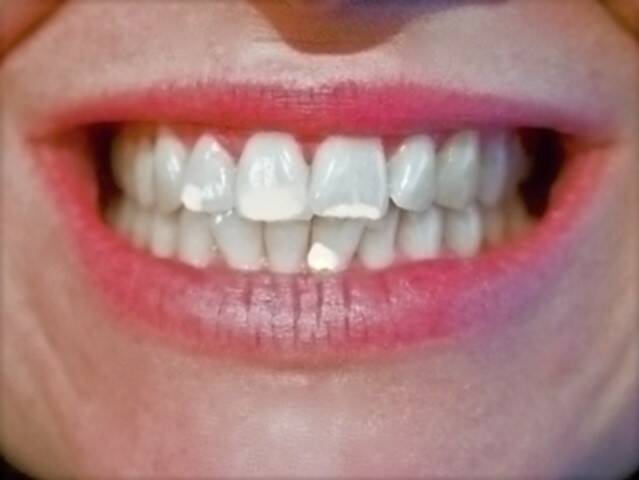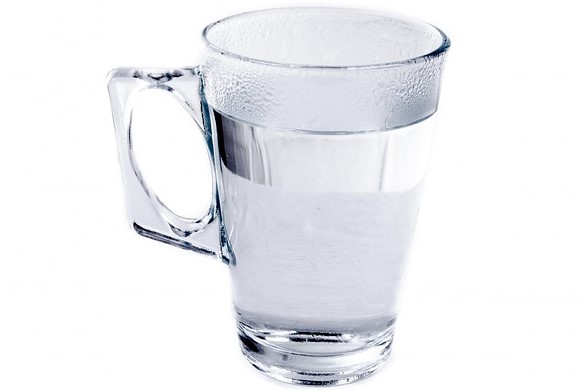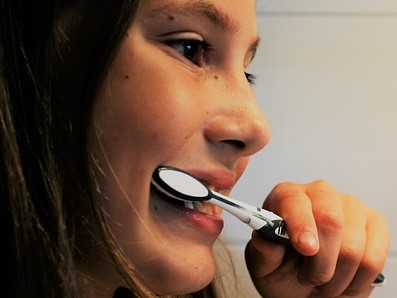White Spots on Teeth: Causes, Symptoms, Treatment

Tooth stains form for a number of reasons. For example, food stains the teeth. Excess fluoride will also show stains. In children, they are an early sign of tooth decay. Poor hygiene and excess plaque tend to be the cause of these stains.
White spot lesions are quite a surprise for many people. They occur in both children and adults. In most cases, a white spot on a tooth may not be any serious symptom.
Definitely, this symptom is not to be underestimated and one should look for possible causes.
FAQs:What do white spots on the teeth mean?Could food be the cause or do we need to look for a more serious problem?How can I protect myself from them and avoid them?How are they treated?
Food and drink as a cause of discolouration

In general, both foods and drinks stain teeth. Tea and coffee, for example, have been known to darken the colour of teeth. This is due to the fact that these beverages contain natural dyes.
There are also drinks and foods, such as rice, that lighten teeth. White stains also form as a result of increased intake of acidic drinks. They are also caused by eating disorders.
Demineralisation
In addition, white spots are also a sign of demineralisation of the tooth enamel. It is not too far from tooth decay. It also arises as a result of a lack of minerals and vitamins.
In children, it is a sign of the early stages of tooth decay. In adults, these stains also occur on the basis of childhood conditions. In congenital decalcification of the tooth enamel, stains also occur.
Fluorosis

However, in the case of stains on the teeth, it can most likely be ruled out. In most cases, it is rather a reaction to the presence of fluoride in the body, technically called fluorosis.
In children, this is a very common phenomenon if there is too much fluoride in the developing tooth enamel. This can be caused, for example, by the use of toothpastes with high levels of fluoride or by drinking water with fluoride in it, as this substance is commonly added to drinking water to disinfect it.
Fluorosis usually occurs in children under the age of 8 and when they still have milk teeth. Therefore, precautions should be taken to prevent these stains from spreading to the permanent teeth.
The enamel of the tooth is damaged by fluoride and its excessive concentration sometimes causes not only white spots on the tooth, but also light brown spots, which is already a higher stage of fluoride saturation of the body and teeth.
Hygiene

Poor dental hygiene is a common cause. The same goes for adults that drink too much fluoridated water, sooner or later these stains will appear in them too.
White spots can be seen on the teeth even with excess plaque. White spots can also be seen after the dental machine. The cause may also be behind gastric reflux disease, where acid from the stomach irritates the enamel of the teeth.
What helps?
The solution lies both in changing the fluoride supply, i.e. changing the toothpaste or drinking different water, and in removing the fluoride from the tooth enamel.
Elimination is not so easy and it is a gradual and longer-term process, which is mainly helped by a change in lifestyle. This means eating foods that promote the strength and better colouring of teeth, such as an apple.
For example, chewing beeswax or brushing your teeth with baking powder can help. However, these are natural methods and if these fail, whitening toothpaste can still help. But be careful not to overdo it, as it may contain various other substances. In the case of a long-lasting condition, it is better to see a dentist.
Why some people have white spots on their teeth
Diseases with symptom "White Spots on Teeth"
Interesting resources
Related










